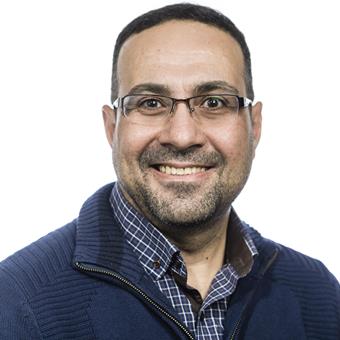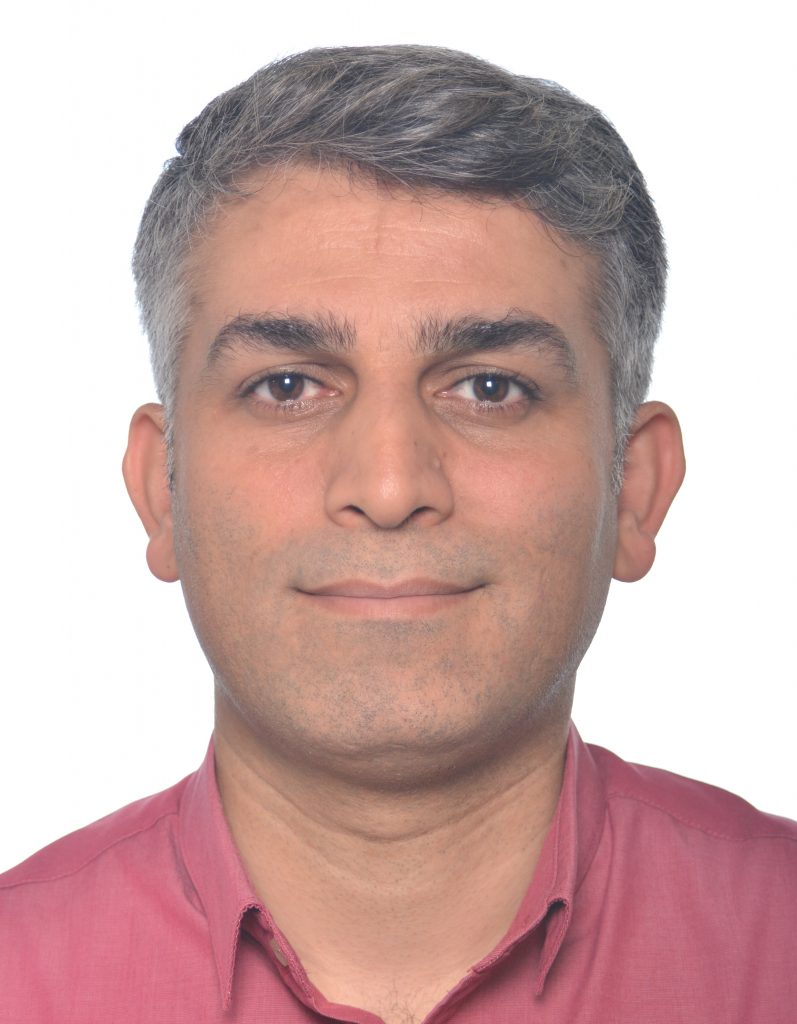ASIASAFE PROJECT DETAILS
PROJECT DETAILS
ASEAN region in South East Asia (where the 3 partner countries of this project, Indonesia, Malaysia and Vietnam ID/MY/VN are part of) has less than 3 percent of the world’s vehicles, but it accounts for about 12 percent of the world’s road deaths. This number remains high compared to countries with much higher levels of motorization, such as the EU partner Partners: Italy, Portugal, and Sweden.
Project partners started the analysis stage during the project preparation. The initial results of the analysis with areas/problems of possible invetigations:
- ·Today, road accidents are the major causes of death and injuries in ID/MY/VN.
- Despite considerable efforts taken to reduce the number of traffic accidents and fatalities, yet the number of fatal accidents still remain high in ID/MY/VN.
- The rate of two-three wheeled vehicles in Southeast Asian countries is very high in a global context. In Vietnam 93%, Malaysia 60% and Indonesia 55%. Portugal and Italy experience also high proportion (about 20%) of motorbikes and mopeds in country, where lessons can be learnt between project partners.
- Vulnerable road users (pedestrians, cyclists and motorcyclists) make up 50-70% of road traffic deaths in ID/MY/VN. VRUs have the high risk to be killed per distance and time travelled.
- Traffic fatality rate per 100,000 population in partner countries of this project proposal is 24.7 in Vietnam, 25 for Malaysia, and 17.7 in Indonesia, comparing to only 3.2 for Sweden, 5.5 for Italy and 5.9 for Portugal. This refers to a very high traffic risk in ID/MY/VN in comparison to EU partners (3-8 times).
- The majority of death and injuries on the roads are among those aged between 15 and 49 years and they are the most economically active group in ID/MY/VN.
- There is lack of a good quality accessible reliable accident data where underreporting and underregistration of accidents data in the official statistics are considerable problems in ID‐MY‐VN. EU partners have a national accident databases. One good practice is STRADA (Swedish Traffic Accidents National Database) where it integrates accidents data from traffic police, hospitals and insurance companies.
- Vehicle and road standards are a critical part of road safety in ID/MY/VN from engineering point of view.
- Road user behaviour and attitudes play a key role in accidents in ID/MY/VN.
- Rapid rate of urbanization and motorisation with lack of infrastructure development.
- Application of IT in Traffic Safety operation and management is important sector to be investigatd.
- Bus Rapid Transit (BRT) in Jakarta city in Indonesia is a good practice to learn from.
- There is a need of advanced curricula and effective research at universities in ID/MY/VN in the subject road Traffic Safety. At postgraduate level, MSc students in civil/transportation engineering learn little about Traffic Safety and mostly from traffic engineering or road design. Besides, if the Traffic Safety curricula exists, it is not upgraded.
- Also new teaching methods (e.g. Problem Based Learning) and ICT in teaching are demanding.
- There is a need for adequate channels coordinated between universities and stakeholders at different levels (Ministries, Municipalities, Traffic Police, Engineers, Car and Motorbike Industry, Insurance, Media, NGOs, etc) in order to promote road safety in the country.
- There is a demand for Professionals to upgrade regularly their knowledge and skills (life-long learning). e.g. LiU (Sweden) run courses for professionals so-called commissioned education in traffic safety.
- To further complicate the matter; there is lack of money available in many countries that obliges engineers and decision-makers for finding specific cost-effective countermeasures, which are not necessarily safe or sustainable (e.g. the usage of motorbikes vs public transport).
- Knowledge and research are demanding. There is a need to tackle simultaneously many fields of action (road design, traffic engineering, traffic management, technologies, education and campaigns, police enforcement, legislation, regulation, etc.) to solve road accidents problem.
- EU partners have already passed similar stages of challenges, where ID/MY/VN can learn from. EU countries since late 1970s, steadily and systematically reduced the numbers and severity of road traffic accidents by implementing coordinated multi-sector remedial and preventive solutions. Much of this existing knowledge and know-how in EU can be transferred and implemented in ID/MY/VN countries.
- Sweden is considered as the best country in traffic safety worldwide with a vision Zero accidents, which can be learnt from.
- EU region set up successfully national and regional targets to cut the number of road traffic accidents y 50% in year 2020 and 2030. ID/MY/VN (as part of ASEAN region) has also set up similar targets.
- Qualitative/quantitative targets and systematic national action plan have been successful in EU to reach the stated these goals. Many recent lessons can be learnt here from EU on this regard.
In ID/MY/VN partner universities, the suggested specialised master degree/diploma in traffic safety within this project will be developed and offered for the first-time, Although the target neighbouring countries in ID/MY/VN have different levels of motorisation (vehicles per population), but they share similar traffic nature, road user behaviour, road accidents types, legislations, management, etc. For instance, they share the same problem with high volumes of vulnerable road users VRUs (pedestrians, cyclists and motorcyclists). Therefore, the three countries can also share largely together knowledge, research results and good practices.
Thus, the project will solve the above challenges via offering advanced modern curricula (Diploma or Degree) at Master level in Traffic Safety includes training based on latest EU standards, research and applications. The planned curricula will be targting both students and proffesionals. The curricula will be supported with EU-ASIA Web-based Network, EU-ASIA Database and Handbook in Traffic Safety for sharing best practices and know-how.
Today many EU Universities offer interdisciplinary master programs in modern high-tech transport engineering as the Traffic Safety. The project EU partners (LiU, UNITOV and U-PORTO) offer for many years a full modern master and PhD curricula as well as research in Traffic Safety, which are taught/conducted to a large extent in English.
The developed curricula will be based on market analysis needs and job demands for graduate engineers. It will be tailored to the nature, problems, needs and local traffic characteristics in ID/MY/VN.
These curricula together with supported materials and gained skills will contribute positively in making road traffic in society in this part of South Asian region safer and sustainable, which can contribute to climate change reduction.
The planned MSc curricula in Traffic Safety, supported with blended learning (face to face and online) for both academic and professional students should have positive impacts in ID/MY/VN to reach additional target group of students/professionals at different ages, and who live in remote areas or with special needs.
The overall aim of the project is to develop, adapt and implement an advanced and modern master curricula, either diploma or a full master programme, in the field of Road Traffic Safety within joint efforts between EU and ID‐MY-VN partner Universities according to EU Traffic Safety standards and best practices, and national accreditation standards. These curricula will be supported by innovative approaches for teaching and learning. The new/upgraded courses will target both students and professionals, include training, in order to produce a new generation of engineers in ID‐MY‐VN with excellent theoretical and practical skills in traffic safety in terms of design, operation, planning andmanagement.
The project will share EU best practices and innovative experiences to support the development of new/existing courses, capacity and knowledge building in Traffic Safety at the partner universities.
The developed curricula will be based on market analysis needs and job demands for graduate engineers. It will be tailored to the problems, needs and local traffic characteristics in ID‐MY‐VN.
Within this overall aim the following specific objectives shall be achieved, which corresponds to knowledge triangle (education, research and business):
- Increasing the awareness of the traffic accidents problem in society in ID‐MY‐VN.
- To define clearly the knowledge and skills required for the master curricula in Traffic Safety according to EU standards and tailored to problems and priorities in partner countries.
- A market study among Industry and Public Authorities in ID‐MY‐VN will be carried out as early at the beginning of the project (the first 3 months) for knowing the scientific and professional career and job demands in the field of traffic safety.
- Different information and communication technologies (ICT) will be incorporated in the new curricula for teaching and learning.
- All EU-ASIA partners will develop/share together teaching materials in traffic safety, which will be available over OpenCourseWare (web sharing platform) for teachers, students and trainees. This includes electronic/wiki library. This will provide more access to higher education for students/professionals who live in more remote towns in the country.
- Mini video lectures (15‐45 minutes) will be recorded in streaming format and be available on the Project web‐based platform for each developed course contents.
- A webinar meeting will be organised between partners every 2 months, for Working Groups, or with invited speakers/attendees from university and stakeholders.
- New pedagogical approaches, e.g. problem‐based learning (PBL), will be tested and applied in the new curricula. Additional e.g. 3D tools modules for teaching will be introduced e.g. traffic safety investigation/reconstruction based on real accidents data. Additionally, mobile smart phone applications in Traffic Safety for teaching and learning will be introduced and investigated.
- Capacity building and training/re‐training the trainers/trainees (teachers/administrative staff/professionals) .
- Establishing Web‐based EU‐Asia (ID‐MY‐VN) Traffic Safety Network between universities‐authoritiesbusiness for benchmarking, exchange of experiences, accidents data, challenges, solutions and recommendations.
- Establishing an interactive Web‐based EU‐ASIA (ID‐MY‐VN) databases for road traffic accidents data and analysis, which can be used for teaching (and also research). It is based on identified quantitative and qualitative performance indicators.
- Developing a Handbook of EU‐ASIA (ID‐MY‐VN) standards and best practices in Traffic Safety includes national policy recommendations and action plan.
- Modern lab in road safety will be established at the ID‐MY‐VN partner universities equipped with advanced hardwares, softwares and ICT tools.
- EU‐ASIA International Conference in Traffic Safety will be organised at the end of project.
- Summer schools in traffic safety will be organised at partner countries in summer 2023. EU teachers and EU students will attend the summer school at ID‐MY‐VN.
- Teachers/Staff/Students’ mobility and training netween EU-ID‐MY‐VN.
- Encouraging the establishment of Traffic Safety NGOs in ID‐MY‐VN as spin‐off of the project.
- Memorandum of Understanding (MoUs) will be signed between partners for continuous collaboration after the project ends.
Therefore, offering these important curricula (master programme/diploma for students and specialised courses for professionals) in Traffic Safety in ID‐MY‐VN will significantly increase the popularity of this topic and benefit ultimately the whole society in country and South ASIA region as well.
The suggested new curricula either diploma or a full master programme involving a one‐year theoretical courses (40-60 ECTS) and a 2nd year with practical projects and thesis work (40-60 ECTS). The final list and number of courses as well as credits will be decided within the consortium in a view if the new curricula in traffic safety, which will be hosted at partner Universities for a new single master degree or within an existing already master programme in transport or a new diploma (with no thesis work) or a joint master programme in the same country. The new curricula either diploma or a full master programme must be accredited during the second year of the project, implemented in the third year of the project, sustained at the partner universities after the project ends, disseminated and recognised nationally, regionally and internationally.
The master curricula would include (but not limited to) the following courses. This will be investiagted further during the project period:
1st semester
Module 1: Sustainable Transport Systems and Climate Change, 6 ECTS
Module 2: Traffic Safety Management, 6 ECTS
Module 3: Statistical and Data Analysis for Traffic Safety, 6 ECTS
Module 4: Traffic Simulation and Safety, 6 ECTS
Module 5: Information Technologies and Traffic Safety, 6 ECTS
2nd semester
Module 6: Road Safety Audit and Traffic Risk Analysis ‐ empirical studies, 6 ECTS
Module 7: National/Regional Traffic Safety Programme, 6 ECTS
Module 8: Geographical Information Systems (GIS) and Traffic Safety, 6 ECTS
Module 9: Traffic Safety and Human Behaviour, 6 ECTS
Module 10: Highway Traffic Engineering and Safety, 6 ECTS
3rd semester
Project I: 15 ECTS and
Project II: 15 ECTS
4th semester
Thesis work: 30 ECTS
Based on the preliminay discussion with project partners, during the project preparation, the project will offer new and updated courses as following:
Partner 4. (UGM): Modules 2, 4, 5, 7, 8, 9 are new courses
P5. (UMY): Modules 2, 4, 5, 7, 8, 9 are new courses
P6. (MUST): Modules 3, 5, 6, 8 are new courses
P7. (UM): Modules 2, 3, 5, 7, 8, 9 are new courses
P8. (UTC): Modules 3, 6, 7, 8 are new courses
P9. (NTTU): Modules 5, 6, 7, 8, 9, 10 are new courses
While other modules per partner universityaalready already exist and need probably to be updated.
The project will facilitate and make EU (ECTS credits) and ID‐MY‐VN (local credit‐hour) courses comparable.
The courses msut run during the third year of the project, between Spring 2023 – Autumn 2023.
During the Kick‐off workshop in February 2021, Working Groups (WGs) will be assigned, MWG, SWG, TWG and EWG for the whole period, as explained below:
1) The Management Working Group (MWG): consists of the EU project coordinator and the Asia Regional Coordinator, and contact persons from all consortium partners. MWG will be responsible in organising, administrating and following up the overall project activities according to the budget and time. MWG will meet, face to face, regularly every 6 months, in addition to skype/webinar meetings every 1‐2 months. LiU is the project coordinator and have the overall responsibility and management (including financial) of the project outputs and outcomes. MUST-MY is the regional coordinator. The local MWG will hold regular communication between each other locally and with other stakeholder outside of the consortium as needs. MWG will be responsible of accrediting the new curricula, student admission process, mobility selection criteria for students, etc. Additionally, the MWG will facilitate cooperation agreements (MoU) signed between partners.
2) A Scientific Working Group (SWG) of assigned professors for academic purposes regarding the curricula analysis, development and training. The SWG will be divided into 3 sub‐groups, related to the modules given before.
EU‐LiU (P1) will be the leader of SWG1 for course modules development 1, 2, 6 and 7.
EU‐UNITOV (P2) will be the leader of SWG2 for course modules development 3, 5 and 8.
EU‐UPorto (P3) will be the leader of SWG3 for course modules development 4, 9 and 10.
3) Technical Working Group (TWG) will be assigned for:
- ICT and web platform for teaching and learning includes web‐based platforms (opencourseware, database and handbook of best standards) for sharing teaching materials between ALL partners as well as best practices,data and know‐how.
- Project website (open to public and closed only for project members).
- Arranging Webinars.
- New pedagogical training. More focus on understanding than memorization of facts, and more active learning than passive e.g. problem‐based learning (PBL), mobile apps teaching tools and demos, etc. The aim is to train the trainers at least (15‐20) teachers/staff from each partner university.
- Facilitate the market study to know the market demand in the field of traffic safety. This must be run in the first 4 months of the project.
4) In the third year of the project, Evaluation Working Group (EWG) of 4 experts within consortium partners (1 EU, 1 ID, 1 MY and 1 VN) for quality control and monitoring. They will evaluate the progress and results of the project and maintain the quality, based on modern assessment models.
The proposed project will be structured in four phases:
- Current curricula analysis (from Month 1 to Month 4):
Partners will run a comprehensive survey (market study) of the present curricula and practical experiences in traffic safety in EU‐ID‐MY‐VN. This survey will include a market study on job demands.
- Development of the new curricula and innovative elements (from M4 to M24):
The main obligatory and elective courses modules and syllabus will be defined and developed. The innovative elements will be collected, prepared and developed.
- Realisation of the new curricula (from M12 to M24):
In cooperation with the MoHE at home country, the new master’s programme/diploma/speacialsed courses in traffic safety will be approved at Partner University.
- Implementation and evaluation (from M25 to M36):
The teaching of new or updated courses has to start with an adequate number of master students (10‐20 students) and retrained teachers, in January 2023.
TEAM MEMBERS


Dr. SEYED MOHAMMADREZA GHADIRI
Project Regional Coordinator (Jan to Nov 2021)
Associate Professor, MUST University

Dr. SEYED MOHAMMADREZA GHADIRI
Project Regional Coordinator (Jan to Nov 2021)
- Email:ghadiri@must.edu.my

![]() This project has been co-funded with support from the European Commission. This publication reflects the views only of the author, and the Commission cannot be held responsible for any use which may be made of the information contained therein.
This project has been co-funded with support from the European Commission. This publication reflects the views only of the author, and the Commission cannot be held responsible for any use which may be made of the information contained therein.

